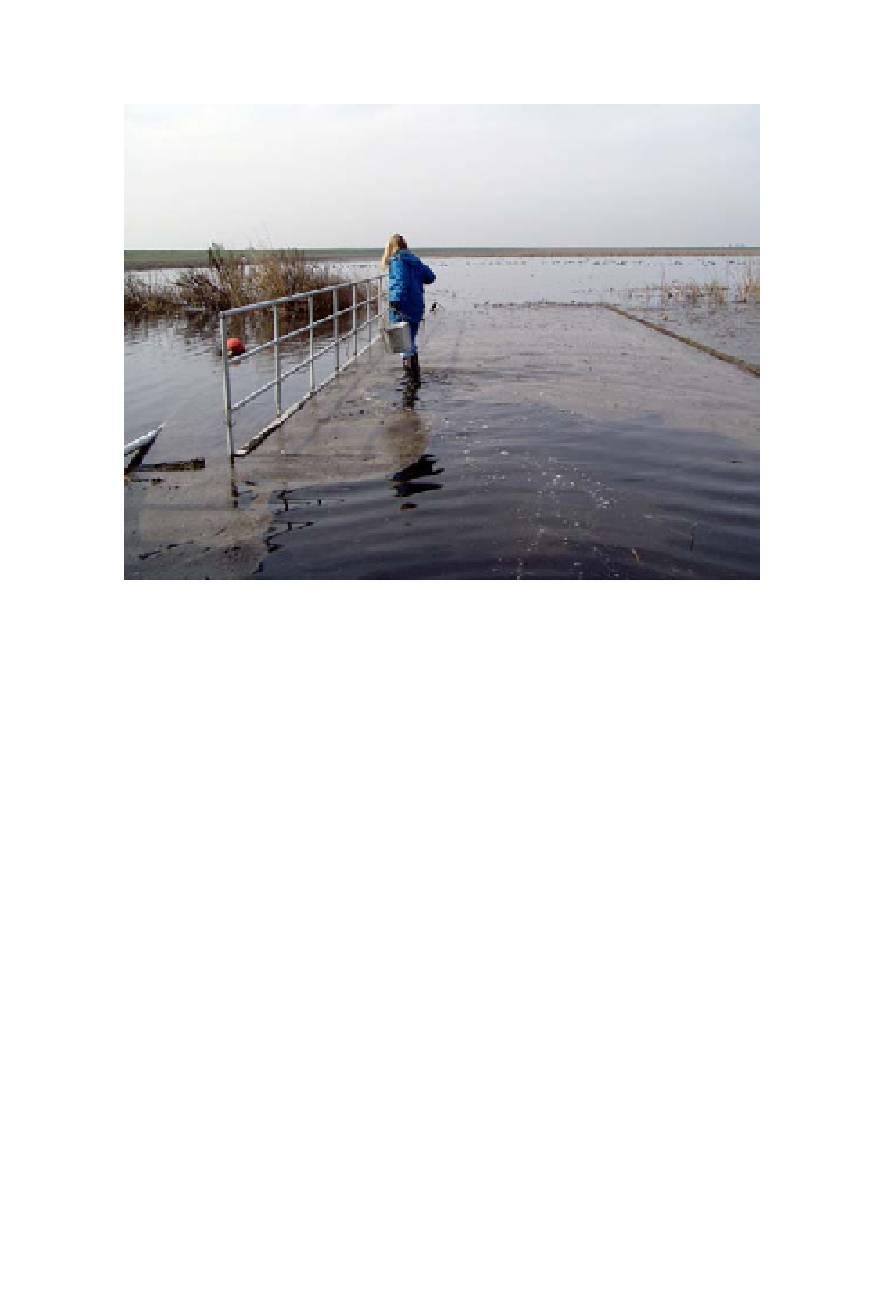Biology Reference
In-Depth Information
Scientist Carol Digiorni collects organic carbon samples in floodwaters produced by
a levee breach on Staten Island in the Delta. (Department of Water Resources)
their annual allotments of snowmelt, forcing wildlife managers to try
other means to improve the lot of failing fish populations. The main tactic,
and the most politically palatable one, was to make physical improve-
ments to fish habitats.
In the 1990s, this endeavor began with a fund for habitat restoration, to
which major urban water districts from the Bay Area and southern Cali-
fornia contributed. The fund later morphed into the interagency state-
federal CALFED program. Among myriad habitat improvements,
CALFED placed gravel in scoured-out riverbeds so salmon could better
dig their redds; re-created river bends long straightened by levees; set lev-
ees back so that riparian plants could sprout on their edges; and left delta
islands flooded by levee breaches to become sheltered shallows for fish.
In the seven years between 2000 and 2007, agencies spent $957 million
on projects that fulfilled the objectives of the CALFED Ecosystem Resto-
ration Program. The program installed or improved 82 fish screens, pro-
tected or restored 55,000 acres of agricultural lands and 130,000 acres of
habitat, and removed numerous dams and barriers to fish movement.
Plans developed by the water supply community and a governor's task
force called for another 65,000 to 100,000 acres of tidal restoration over
the next 50 years.
More recent planning efforts for the delta have continued to emphasize
restoration. A 2008 strategic vision made the goal of restoring the delta

